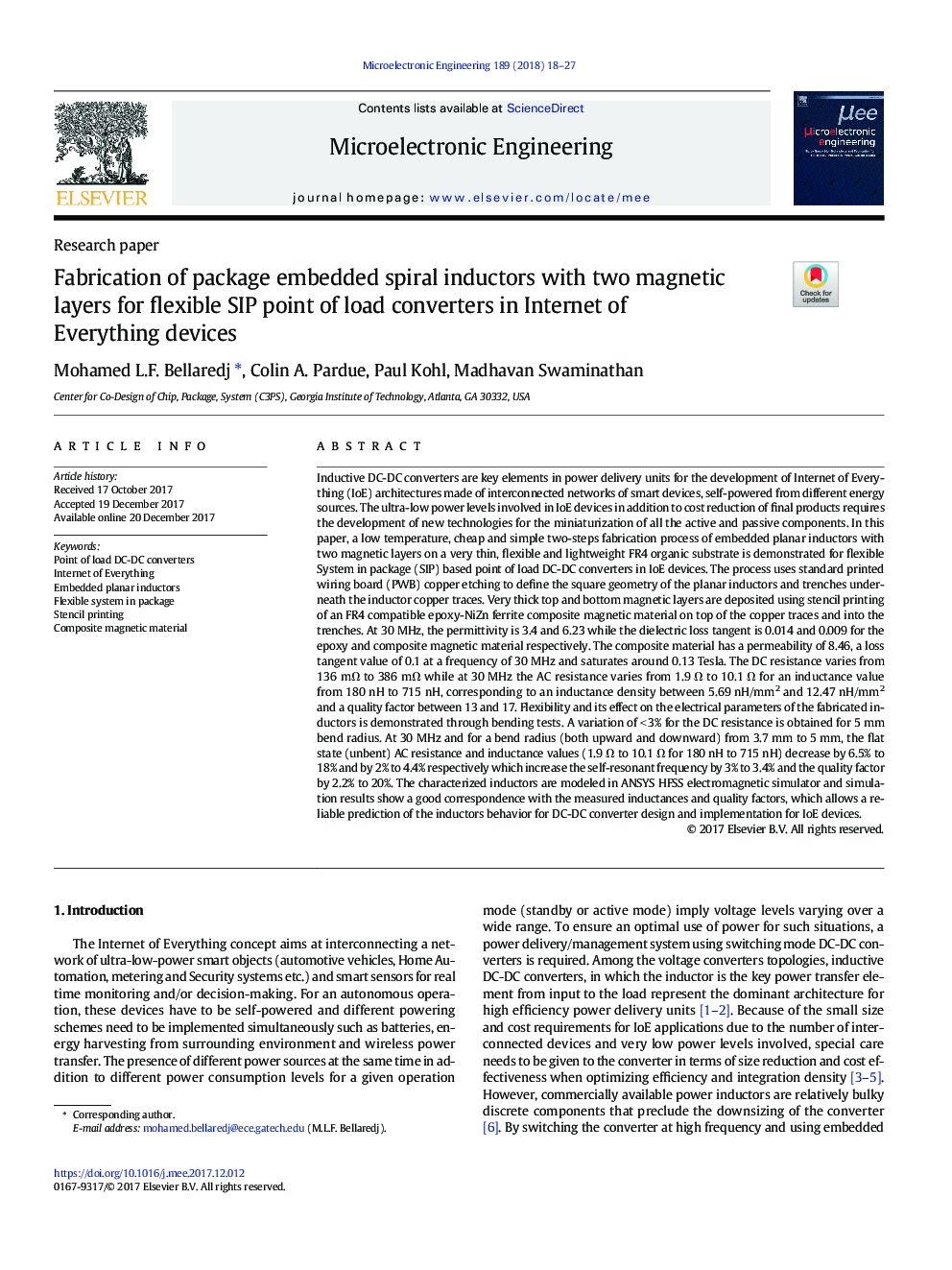| Article ID | Journal | Published Year | Pages | File Type |
|---|---|---|---|---|
| 6942623 | Microelectronic Engineering | 2018 | 10 Pages |
Abstract
Inductive DC-DC converters are key elements in power delivery units for the development of Internet of Everything (IoE) architectures made of interconnected networks of smart devices, self-powered from different energy sources. The ultra-low power levels involved in IoE devices in addition to cost reduction of final products requires the development of new technologies for the miniaturization of all the active and passive components. In this paper, a low temperature, cheap and simple two-steps fabrication process of embedded planar inductors with two magnetic layers on a very thin, flexible and lightweight FR4 organic substrate is demonstrated for flexible System in package (SIP) based point of load DC-DC converters in IoE devices. The process uses standard printed wiring board (PWB) copper etching to define the square geometry of the planar inductors and trenches underneath the inductor copper traces. Very thick top and bottom magnetic layers are deposited using stencil printing of an FR4 compatible epoxy-NiZn ferrite composite magnetic material on top of the copper traces and into the trenches. At 30 MHz, the permittivity is 3.4 and 6.23 while the dielectric loss tangent is 0.014 and 0.009 for the epoxy and composite magnetic material respectively. The composite material has a permeability of 8.46, a loss tangent value of 0.1 at a frequency of 30 MHz and saturates around 0.13 Tesla. The DC resistance varies from 136 mΩ to 386 mΩ while at 30 MHz the AC resistance varies from 1.9 Ω to 10.1 Ω for an inductance value from 180 nH to 715 nH, corresponding to an inductance density between 5.69 nH/mm2 and 12.47 nH/mm2 and a quality factor between 13 and 17. Flexibility and its effect on the electrical parameters of the fabricated inductors is demonstrated through bending tests. A variation of < 3% for the DC resistance is obtained for 5 mm bend radius. At 30 MHz and for a bend radius (both upward and downward) from 3.7 mm to 5 mm, the flat state (unbent) AC resistance and inductance values (1.9 Ω to 10.1 Ω for 180 nH to 715 nH) decrease by 6.5% to 18% and by 2% to 4.4% respectively which increase the self-resonant frequency by 3% to 3.4% and the quality factor by 2.2% to 20%. The characterized inductors are modeled in ANSYS HFSS electromagnetic simulator and simulation results show a good correspondence with the measured inductances and quality factors, which allows a reliable prediction of the inductors behavior for DC-DC converter design and implementation for IoE devices.
Keywords
Related Topics
Physical Sciences and Engineering
Computer Science
Hardware and Architecture
Authors
Mohamed L.F. Bellaredj, Colin A. Pardue, Paul Kohl, Madhavan Swaminathan,
